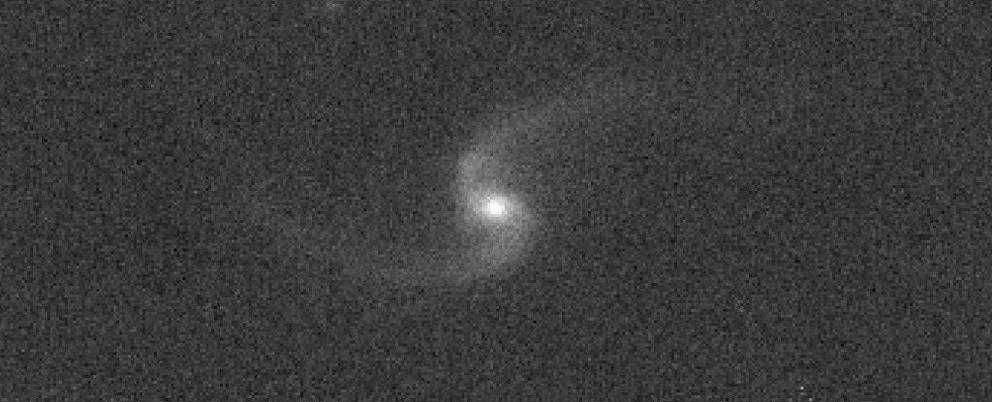Early reports indicate we may have detected a black hole and neutron star collision
It looks like we've bagged another win for gravitational wave astronomy. A new gravitational wave detection is the best candidate yet for a type of cosmic collision never seen - the elusive merger between a black hole and a neutron star.
The event, called S190814bv, was detected by the LIGO and Virgo interferometers at 11 minutes past 9 pm UTC on 14 August. And, based on initial analysis, there's a 99 percent chance that it's a neutron star-black hole kaboom.
Even as you read this, scientists are poring over data and staring hard at the sky, looking for the light that may have been left behind by the neutron star as it is absorbed into the black hole.
"It's like the night before Christmas," astronomer Ryan Foley of the University of California, Santa Cruz told ScienceAlert. "I'm just waiting to see what's under the tree."
Since that amazing first gravitational wave detection - a collision between two stellar mass black holes - was announced in February 2016, the field has been only growing stronger. The technology is so sophisticated it can detect collisions between two neutron stars - objects much less massive than black holes.
Both neutron stars and black holes are the ultradense remains of a dead star, but we've never seen a black hole smaller than 5 times the mass of the Sun, or a neutron star larger than around 2.5 times the mass of the Sun.
But a collision between a black hole and a neutron star has evaded us. One detection looked like it might have been such an event, earlier this year, but the odds were just 13 percent. And the signal to noise ratio was so low, astronomers didn't follow it up.
That's not the case with S190814bv. The signal is really strong, and astronomers are excited - if it really is a collision between a neutron star and a black hole, it will be the first time such a binary system has ever been seen.
This would mean that such binary systems, hypothetical until now, are indeed possible. We could even get clues as to their formation - did they form as a binary, living, growing and dying together? Or did the black hole capture a passing neutron star into its orbit?
Believe it or not, we can learn that from the gravitational wave signal - ripples in spacetime caused by a massive collision, like a rock dropped in a pond - if it's strong enough. Clues to the formation of the binary are encoded in the waveform, along with the masses of the individual objects, their velocity and acceleration.
"From the gravitational wave signal, one can get information about the spins of the individual objects and their orientation compared with the axis to the orbit," physicist Peter Veitch from the University of Adelaide in Australia and OzGrav (the Australian branch of the LIGO Scientific Collaboration) told ScienceAlert.
"[We're] looking to see whether the rotational spin of the individual objects are aligned with each other, which might suggest that they were initially in a binary system. Whereas if one compact object was captured by another as galaxies merged, for example, then you might expect these objects have different spins pointing in different directions."
Foley and his colleagues are currently using the Keck Observatory to study a galaxy around 900 million light-years away. That's where they think the signal might have originated. They're looking for electromagnetic radiation that might result from the collision involving a neutron star.
And, of course, there's the burning question: what do neutron star guts look like?
"We would love to observe a black hole ripping a neutron star apart as they come together," says theoretical physicist Susan Scott of the Australian National University and OzGrav.
"This would give us vital information about the material which makes up the densest stars in the Universe - neutron stars - which remains a very big open question in the field."
If there's no electromagnetic radiation detected, that could mean astronomers are simply looking in the wrong place. Or it could mean that the electromagnetic radiation is too weak to be detected.
It could also mean a neutron star isn't involved - which would be very interesting, because the signal suggests that the smaller object is less than three times the mass of the Sun. If it's not a neutron star, it might instead be the smallest black hole we've ever detected.
Or it could mean that the dynamics between a neutron star and a black hole as they smoosh together into a slightly bigger black hole are even weirder than we knew.
"My favourite way to think about it (for the moment) is that if a black hole is much more massive than a neutron star, then when they merge, the neutron star will be torn apart inside the event horizon of the black hole! In that case, even if there's plenty of light generated, none will escape the black hole for us to see," Foley told ScienceAlert.
"That is about as close to science fiction as you get."

